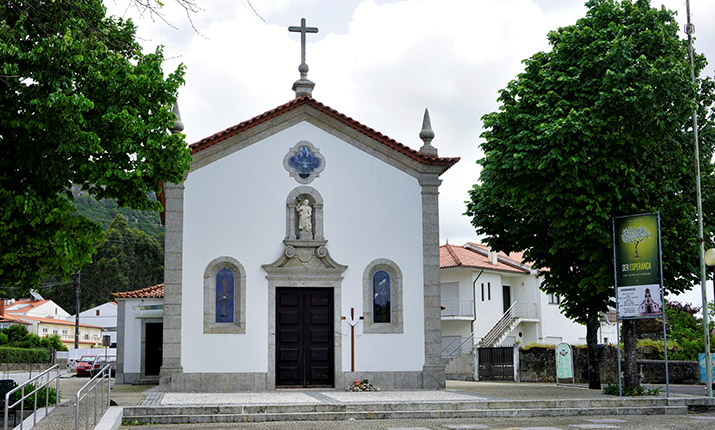

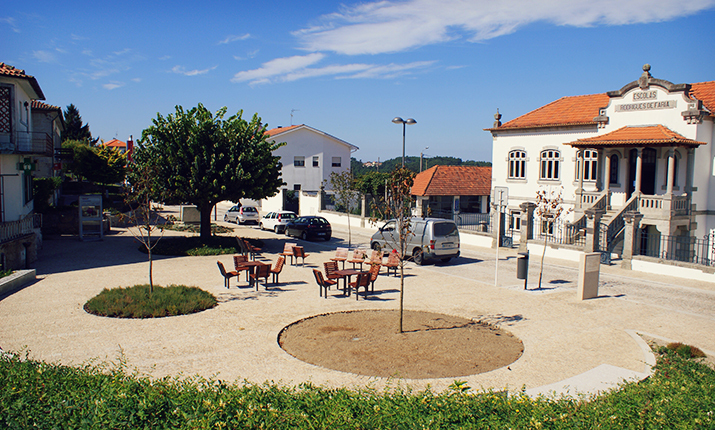



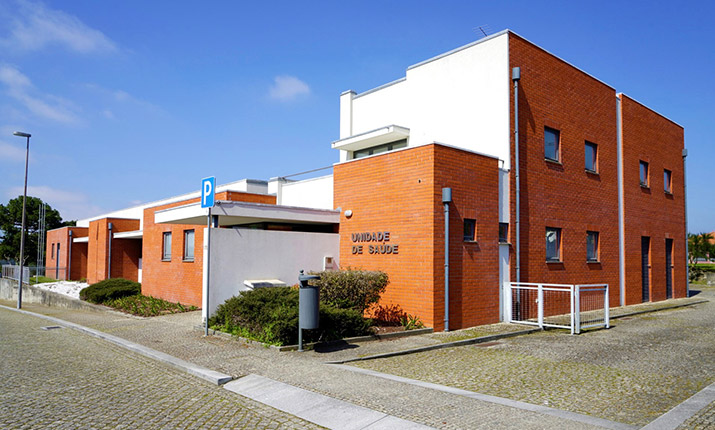





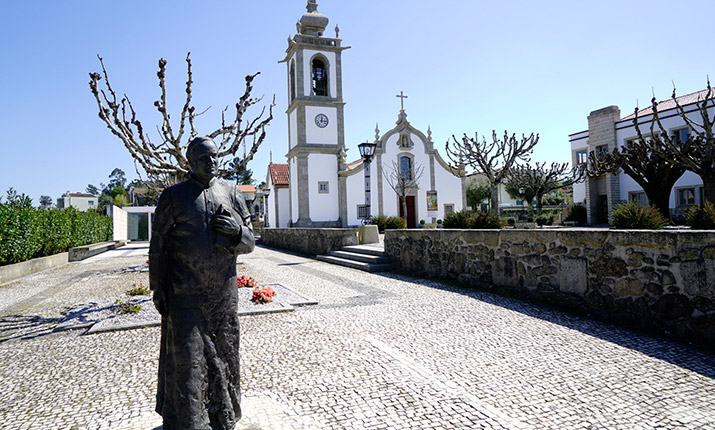
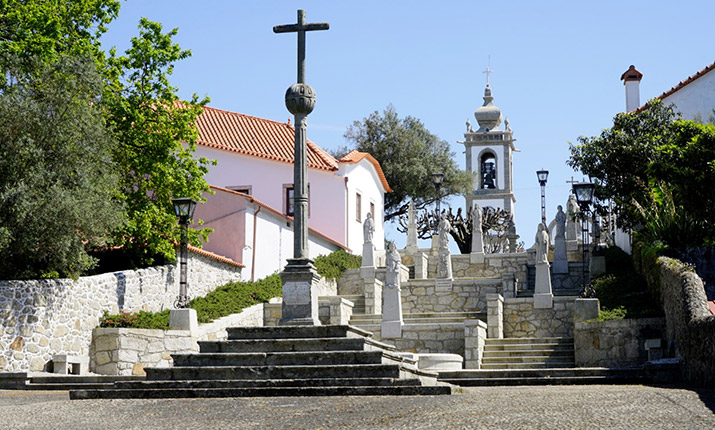
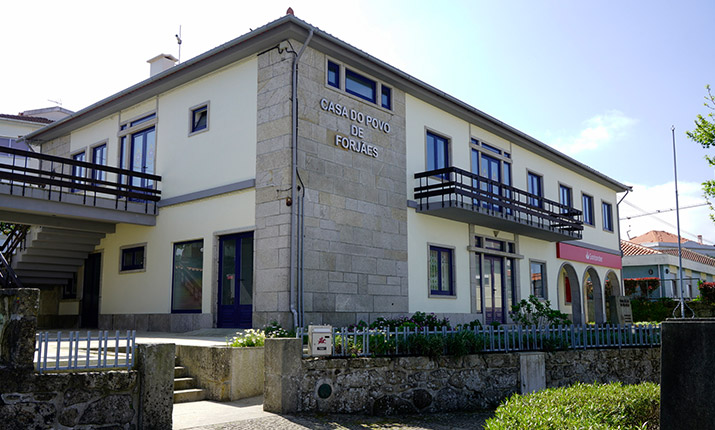

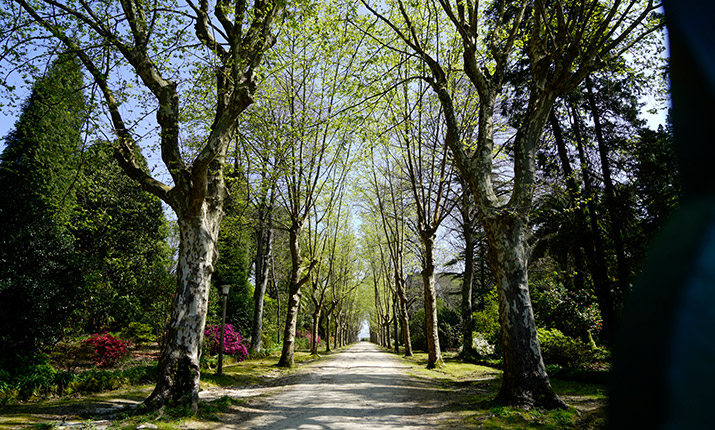
Forjães
The current Cultural Centre of Forjães is set up in the old Rodrigues de Faria Schools. In 1934 Rodrigues de Faria, emigrant in Brazil, inaugurated a notable work - the elementary schools of his homeland - when he returned with an immense fortune. Rodrigues de Faria decided that the schools would have everything needed that at the time. Before entering the building, notice that it is a solid granite building with a serious and majestic appearance. Inside, there were six classrooms, a drawing room, an assembly room and a covered playground for rainy days.
Outside, a gym and a large walled enclosure, destined to be a playground, were built. However, the wealthy emigrant was not only concerned with the appearance and quality of the building: he endowed the schools with all teaching and learning materials that he found available. Still unsatisfied, he commissioned Master Jorge Colaço to decorate the interior of the building with tile panels. When the works were completed, Rodrigues de Faria made a donation to the Portuguese State, expecting nothing in return. As a result, he became the legal owner of the schools. In the 90s, this was still the building of the Elementary School in Forjães, but the signs of degradation became evident, and when the school activity moded to the new Integrated Elementary School, the Town Council of Esposende decided to renovate the property and give it a new life. The architectural intervention was very meticulous so as to not abruptly rupture with the previous building. The current Cultural Centre, in addition to hosting the Parish Council, has a Library, Multimedia Room, Auditorium and Gallery/Coffee shop. Outside, the gardens invite us for a stroll.
By entering the building and strolling through its rooms, we can admire the famous tile panels that adorn the walls. The panels are in line with the Portuguese tile tradition. The largest - more than three meters high and nearly six meters wide - depict scenes from the History of Portugal. Smaller tiles contain the quotes of famous personalities, considered of interest for the education of young students. The theme of the larger panels is based on the events in the History of Portugal, which were considered exemplary, worthy of note in the education of children. From the History of Portugal, we can admire, in chronological order:
- D. Afonso Henriques at the Battle of Ourique - which mythically represents the foundation of Portugal
- D. Nuno Álvares Pereira in the Battle of Aljubarrota - which is the impetus of Independent Nation against Leon and Castile
- Prince D. Henrique in the conquest of Ceuta - that represents the beginning of the Portuguese "Golden Age", with the territorial and marine expansion
- "The Adamastor" - representing the Portuguese victory against the dangers of the Ocean Sea and the passage to the East
- The visit of Vasco da Gama to the Zamorin of Calicut - which represents the beginning of Portuguese relations with the East
- The discovery of Brazil - which represents another and important phase of the Portuguese expansion
- Pedro Álvares Cabral in 1500 - Another national hero, who discovered of Brazil
- Afonso de Albuquerque in Ormuz - which represents the strong, albeit ephemeral, Portuguese presence in the East,
On the smaller panels arise quotes from Bossuet, Tomás Ribeiro, Alexandre Herculano, Oliveira Salazar and Sidónio Pais.
In the place where now stands the Parish Church, there must have been a late medieval temple, since we were able to date a grace found at the site to the 10th or 11th century. Nevertheless, the current building is much more recent - from the 18th century. Outside the churchyard, there is a monumental staircase representing the nine Sisters of Santa Marinha, built in the 70s of the 20th century by the priest Joaquim Campos Lima.
The rush mats of Forjães, whose origin is still unknown, are the testimony of the craftsmanship that has been passed down from generation to generation, from parent to child. From the craftsman, workshop comes out carpets, runner rugs, and baskets, which are used in the Minho region and all over the country to safely stow and transport numerous items. Given it is a low-cost item, there was a time when these baskets were widely used by farmers wivers, where they would take the meal to their husbands that were working in the fields, and by all those who would go to the fair in order to sell or purchase products and, more recently, by some people, who in summer time use them to carry the towel, suntan lotion and some magazine and newspapers to the beach.
In the parish, there is still the 18th-century Manor House of Pregais and the imposing Quinta de Curvos. In the later, we can see the grandiose gardens embroidered with national and exotic trees, the streets and recreational spaces, the small nooks composed of lakes and caves, the flowerbeds and greenhouses equipped with various types of flowers.



